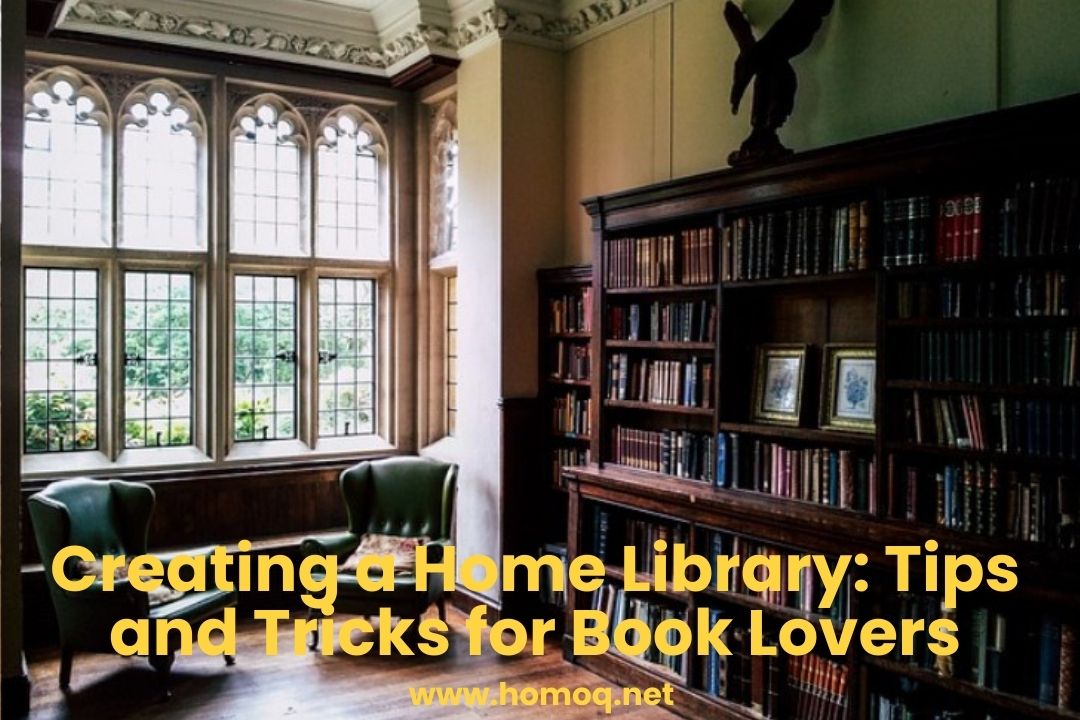Building a home library is a dream for book lovers and knowledge seekers. Whether you have an entire room to dedicate or a cozy corner, a well-organized home library can be a haven for relaxation, inspiration, and learning. This guide will walk you through the essential steps to creating a home library, offering practical tips and tricks to make it functional and aesthetically pleasing.
Benefits of Having a Home Library
- Encourages Reading: Having a dedicated space for books fosters a reading habit.
- Enhances Home Aesthetics: A well-designed library adds charm and character to any home.
- Improves Organization: Keeps books neatly arranged and easily accessible.
- Creates a Learning Environment: Provides a quiet, focused space for study and research.
- Boosts Mental Well-being: Reading helps reduce stress and improve cognitive function.
Choosing the Right Space for Your Home Library
The first step in creating a home library is selecting the correct location. Consider the following:
- Available Space: A spare room can make a perfect library. Otherwise, a cozy corner, a hallway, or an under-the-staircase nook can work.
- Natural Light: A well-lit space enhances reading comfort. If possible, choose a location near a window.
- Quiet and Distraction-Free: Select an area away from high-traffic zones to create a peaceful reading environment.
- Ventilation and Climate Control: To prevent damage, books should be stored in a space with good air circulation and controlled humidity.
Essential Elements of a Home Library
1. Bookshelves and Storage
Bookshelves are the foundation of any home library. Consider the following options:
- Built-in Shelves: Custom-built shelving maximizes space and enhances aesthetics.
- Freestanding Bookcases: Ideal for renters or those who frequently rearrange furniture.
- Wall-Mounted Shelves: A space-saving option for small homes.
- Modular Storage Units: Allow for flexible and customizable storage.
2. Comfortable Seating
A cozy reading nook is essential for enjoying your books. Consider these seating options:
- Armchairs or Recliners: Provide comfort and support for long reading sessions.
- Window Seats: Utilize natural light and offer a peaceful retreat.
- Bean Bags or Floor Cushions: Great for casual reading and small spaces.
- Ergonomic Chairs: Ideal for study-oriented home libraries.
3. Proper Lighting
Good lighting is crucial for reading without straining your eyes. Opt for:
- Natural Light: Position your reading area near a window.
- Floor Lamps: Adjustable lamps with soft white light work best.
- Task Lighting: Desk lamps with LED bulbs provide focused illumination.
- Ambient Lighting: Wall sconces or fairy lights add a warm and inviting touch.
4. Organizational System
Keeping your books organized ensures easy access. Choose a system that suits you:
- By Genre: Fiction, non-fiction, biographies, fantasy, etc.
- By Author: Alphabetically arranged for quick searchability.
- By Color: A visually appealing method for design-focused libraries.
- By Read/Unread: Keep unread books separately to track your reading goals.
5. Personal Touches
Add elements that reflect your personality and make the space inviting:
- Decorative Items: Framed artwork, vintage clocks, or collectibles.
- Plants: Indoor plants add freshness and improve air quality.
- Rugs and Cushions: Enhance comfort and coziness.
- Bookends: Stylish bookends help keep books in place.
Maintaining Your Home Library
To keep your home library in top condition:
- Dust Regularly: Bookshelves should be dusted weekly to prevent buildup.
- Rotate Books: Rearrange books periodically to avoid wear on spines.
- Use Book Covers: Protect valuable books with dust jackets or plastic covers.
- Keep Books Upright: Prevent bending and warping by using bookends.
- Monitor Humidity: Keep books dry to prevent mold and mildew.
Budget-Friendly Tips for Building a Home Library
Creating a home library doesn’t have to be expensive. Here are some cost-effective ideas:
- Thrift Stores and Second-Hand Bookshops: Find great books at a fraction of the cost.
- Library Sales and Online Marketplaces: Websites like eBay, Craigslist, or Facebook Marketplace often have discounted bookshelves and books.
- DIY Bookshelves: Use wooden crates or repurpose old furniture for budget-friendly shelving.
- Digital Books and Audiobooks: Consider an e-reader or audiobook subscription if space is limited.
FAQs
How can I prevent books from getting damaged over time?
Store books in a cool, dry place, dust them regularly, and cover them with book covers to prevent wear and tear.
What is the best way to arrange books in a home library?
It depends on your preference—organize by genre, author, color, or reading status.
How much space do I need for a home library?
You can create a library in any available space, from a whole room to a small corner or wall-mounted bookshelves.
What type of lighting is best for a reading space?
A mix of natural light, task lighting (LED desk lamps), and ambient lighting works best.
How can I make my home library more inviting?
Add cozy seating, soft lighting, decorative items, and personal touches to create a warm atmosphere.
Creating a home library is a rewarding experience that enhances your reading habits and adds character to your home. With the proper organization and creativity, you can design a personal book haven that reflects your love for literature.

